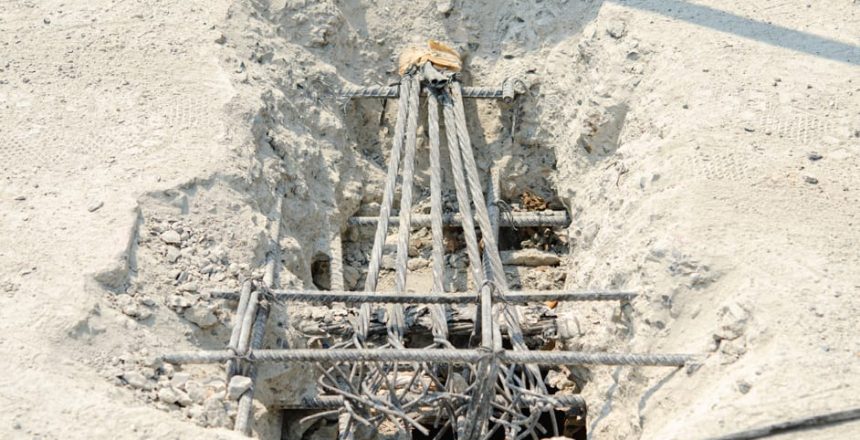Have you ever wondered why that big chunk of concrete fell out of your ceiling and landed on your head? No? Maybe it’s just me, then. But seriously, if you found yourself when you’re standing in a huge puddle of water in your living room, with a giant hole in your ceiling, and concrete debris everywhere, you would wonder what caused it and how to fix it. The chances are you have a case of a post-tension concrete repair gone wrong. Here’s everything you need to know about post-tension concrete repairs.
What Is Post-Tensioning?
In building construction, post-tensioning is a method used to reinforce concrete and other materials. Post-tension concrete repair applies compressive force to the material using high-strength steel cables or tendons. It helps to increase its load-bearing capacity, making it ideal for buildings and other structures. In addition, post-tensioning can repair existing damage. Post-tensioning can often help restore structural integrity and improve the appearance of cracked or otherwise damaged concrete by applying tension to the damaged area. Whether you’re looking to prevent future problems or repair existing damage, post-tensioning is an effective solution.
There are two main types of post-tensioning: unbonded and bonded. Unbonded post-tensioning is when the tendons are not anchored to the concrete, while in bonded post-tensioning, they are anchored. In both cases, the tendons are placed in a pre-stressed state before the concrete is poured, creating a more stable structure that can better withstand external forces.
Advantages of Post-Tensioning
The advantage of post-tensioning is that it allows a greater amount of stress to apply to the concrete than if the reinforcement was not present, resulting in a stronger and more durable finished product. In addition, post-tensioning and adding new tendons to the existing ones, the damaged area can be reinforced and strengthened than before.
- It lessens or completely prevents shrinkage cracking, so fewer or no joints are required.
- It enables the construction of slabs over broad or soft soils.
- It permits thinner structural parts and slabs.
- The few cracks that do occur are securely bound.
- It enables raised members with larger spans, such as floors or beams.
- It can repair existing structures that have been damaged by fire, earthquakes, or other disasters
When Is Post-Tensioning Needed?
You might not realize it, but the concrete in your building or home is under a lot of pressure. Every day, it has to bear the weight of the structure above, furniture, people, and other objects inside. Over time, this can lead to cracks and other damage. To help concrete withstand this pressure, builders often use a technique called post-tensioning. This technique involves installing steel cables inside the concrete before it dries. Once the concrete has cured, the cables are tightened, putting the slab under tension, helping to reinforce the concrete and prevent cracking. If your building or home is showing signs of concrete damage, post-tensioning can repair it effectively.
When it comes to the repair of post-tensioned, reinforced concrete construction, there’s no one more qualified than the team at DC Byers in Grand Rapids. With over 20 years of experience in the field, they’re experts at everything from initial construction to subsequent reconditioning. Whether you’re looking to build a new parking structure or merely keep your existing one in top condition, call us at 616-538-7300. You won’t be disappointed.
